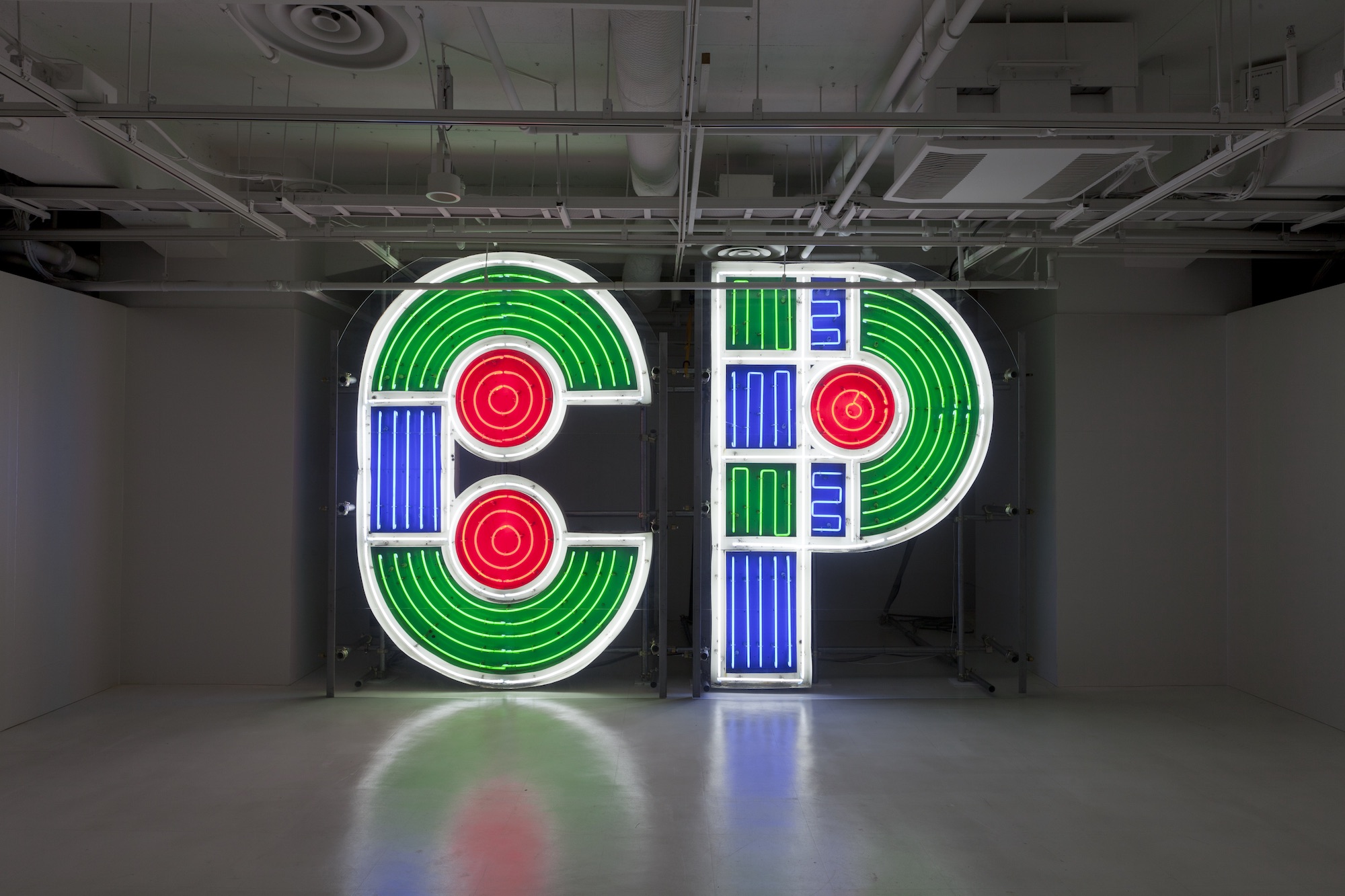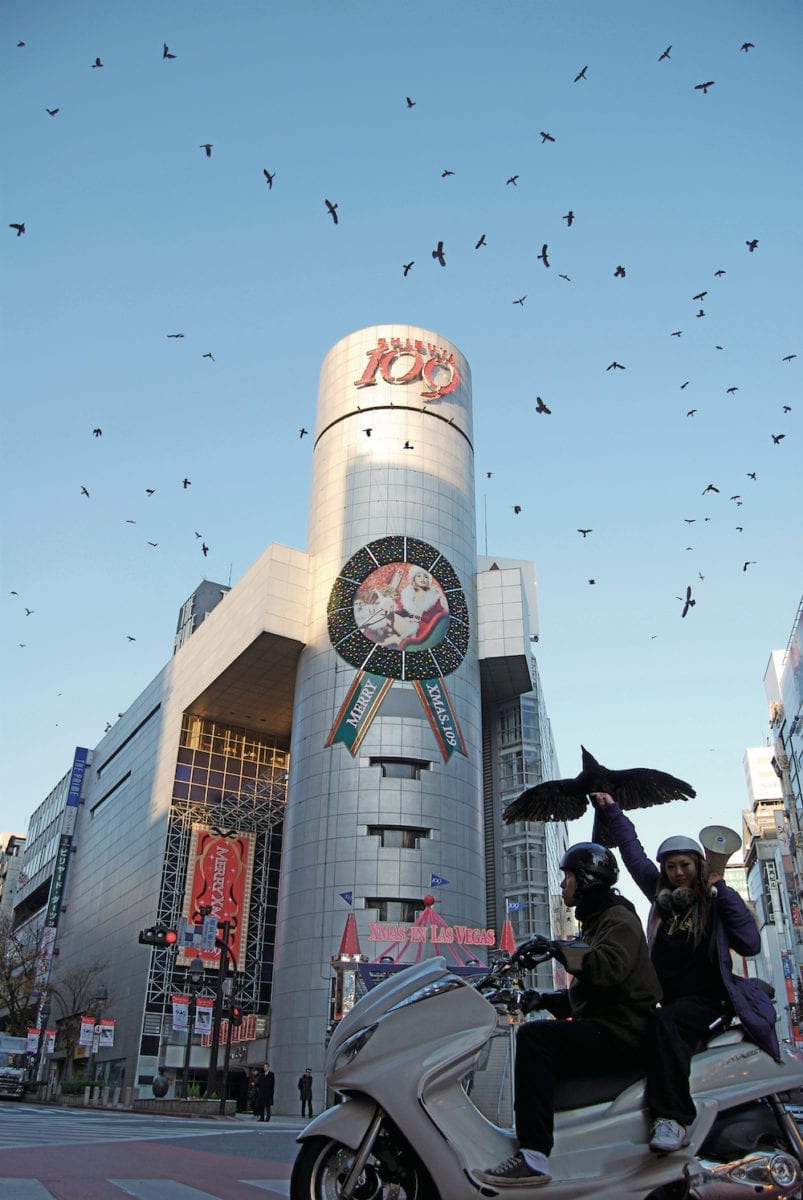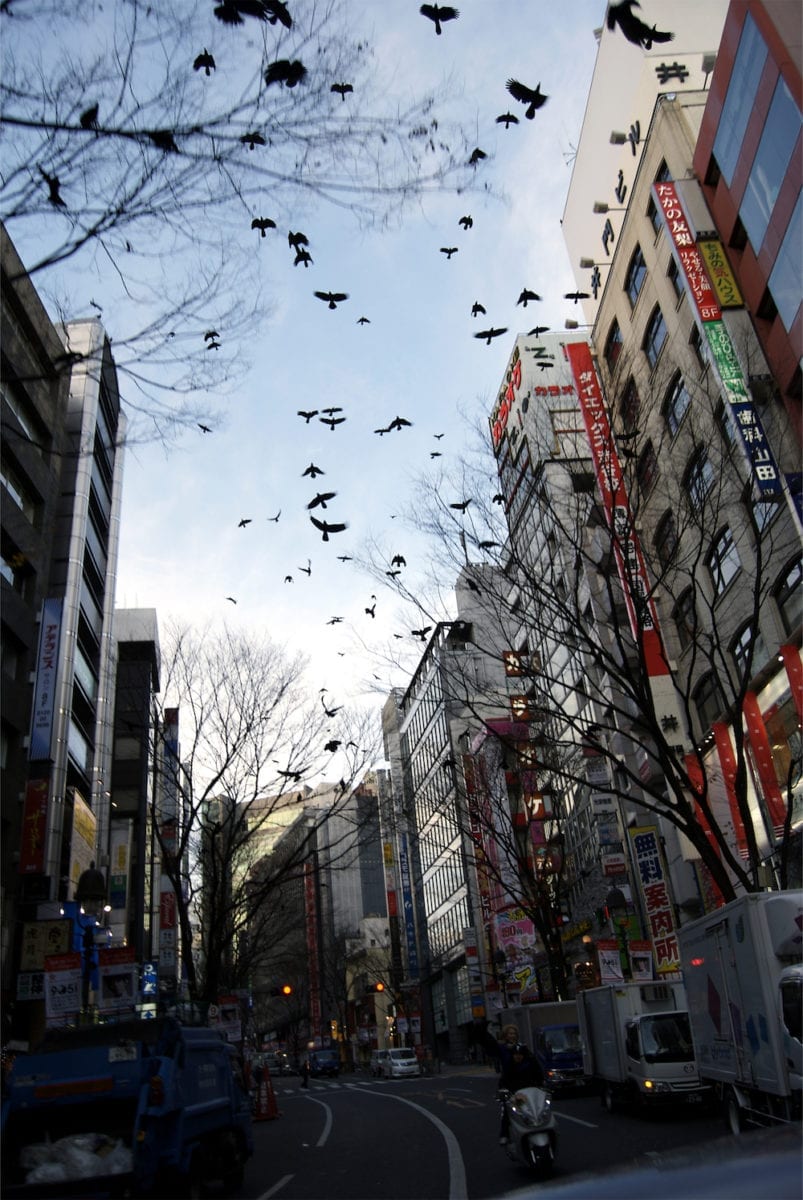
It’s with this sort of punk attitude that the neo-Dadaist Tokyo collective—made up of six members, all in their early thirties—have taken pleasure in tickling the not-so-fond-of-fun Japanese art world.
We meet in their studio in the popular neighbourhood of Koenji in west Tokyo. The studio is housed in the Kita-Kore Building, a dilapidated and chaotic shack containing designers’ studios and a unique collection of clothing stores. (“It’s not hard to imagine that Lady Gaga shops here,” notes Lonely Planet.) Chim↑Pom say that they will soon be moving into a second studio in the more luxurious area of Aoyama, where a generous patron has offered them a working space, but they intend to keep their Kita-Kore space as a showcase. It’s labyrinthine, divided into small, messy rooms where several people are working simultaneously on different projects while playing 90s hardcore techno.

The founder and mastermind of Chim↑Pom is Usher Ryuta, who was formerly part of the art collective Futsu Kenkyujo as well as a member of a punk band. Okada Masataka is the person responsible for practicalities such as obtaining authorizations and evaluating budgets. Inaoka Motomu performs and paints. Hayashi Yasutaka, absent on the day of our visit, is a graphic designer and video artist. The role of Mizuno Toshinori is less clear—that lack of clarity being a running joke within the group. Last but not least is Ellie, the only female member of the group: fragile of silhouette but definitely the strongest character. The clearly defined structure means that Chim↑Pom operate as a kind of micro-society. The presence of a leader is fully accepted, but they are flexible and change roles depending on the demands of any particular project.
Active since 2005, they decided to call the art world their home despite the fact that they clearly didn’t really belong to it. (Fun fact: one of the members has been rejected three times by Tokyo University of the Arts, the number-one-ranked university for the arts in Asia.) Feeling like misfits and rather liking that status, they started searching for peers. Their first piece, Super Rat, involved them taking to the streets of Shibuya at night to pursue the new breed of rodents that have been able to survive the poison that humans have laid out for them all around the city. They caught, stuffed and painted them yellow to make them resemble Pikachu, the beloved Pokémon mouse. Having developed a thing for stuffed animals, their next piece, called Black of Death, then showed the artists spookily leading a swarm of crows through empty Tokyo streets.
“We never apologize about our work, we apologized because we didn’t give notice”
The fuss around the collective didn’t result from these stuffed-animal projects, though. Instead it began when they skywrote the word “PIKA” (an onomatopoeia for the sound of an explosion, often featured in manga) above Hiroshima. City officials saw contempt in the act and called for a public apology. On this occasion Chim↑Pom obliged and then unexpectedly turned the affair into a rich collaboration with the association of World War II victims which produced a book. They haven’t made a habit out of apologizing, however. “We never apologize about our work, we apologized because we didn’t give notice,” they say.
Chim↑Pom cleverly balance commissioned works with guerrilla actions. “The future is very important to us, we’re always discussing it. We’ve already planned projects till 2021. But we don’t know if it’s a good or a bad thing because we are never sure what will happen in Japan and in the world, and we want to reflect these happenings.” Working with institutions and museums has allowed them to showcase their work in official locations and find support even if their guerrilla actions are sometimes at the limit of the law.
Another kind of support is visible in their work—that of the people they meet, people outside the institutional art world, people from everywhere. A month after the earthquake and the Fukushima Daiichi nuclear power plant accident, they started working on the series Real Times. One video shows four of the members wearing masks as they leave their car behind to approach the reactors as closely as possible. In another video, Ki-Ai 100, they can be seen with adolescents from Soma, a town in the devastated area of Tohoku, making an improvised chant of a kind traditionally performed before martial-art performances. You can hear them shouting things like “I want a girlfriend! YEAH! Radiation exposure is great! YEAH! Radiation is great! YEAH! Radiation is leaking! YEAH! We can do it! YEAH!” It leaves you bewildered—a reaction shared by everyone caught up in the Fukushima situation.
- BLACK OF DEATH (above 109, Shibuya, Tokyo), 2007, Courtesy of the artist and MUJIN-TO Production, Tokyo
It’s a Wall World consists of big puzzle pieces cut from the white walls of art galleries. A video shows the members of Chim↑Pom in different parts of the world cutting off parts of cars, a hut, etc, and replacing them with the gallery wall pieces. The cropped real-world elements are then brought back to Tokyo to the Kita-Kore studio. What’s very clear in the footage is how engaged the other people involved in the actions—children and adults like—are. Chim↑Pom’s enthusiasm is clearly contagious.
If Chim↑Pom’s work is regularly linked to global issues, it always starts from a more personal story. In 2014, the collective was supposed to take part in a group exhibition at Friedman Benda gallery in New York. In the event, Ellie had trouble getting through immigration. The resulting installation therefore included bundles of hay and a video of Skype conversations made between Ellie and the gallery staff. Called Coyote, the work was a homage to Joseph Beuys’s I Like America and America Likes Me.
When we meet, the gentrification of Tokyo appears to be the next topic for scrutiny by the collective. Ellie’s husband is very much involved with the Kabukicho area and has offered the group the chance to work on a building that is about to be demolished. How Chim↑Pom will turn wrecking balls into art, and how they will they integrate their distinctive signature into the rubble, is hard to say—but should be well worth discovering…






